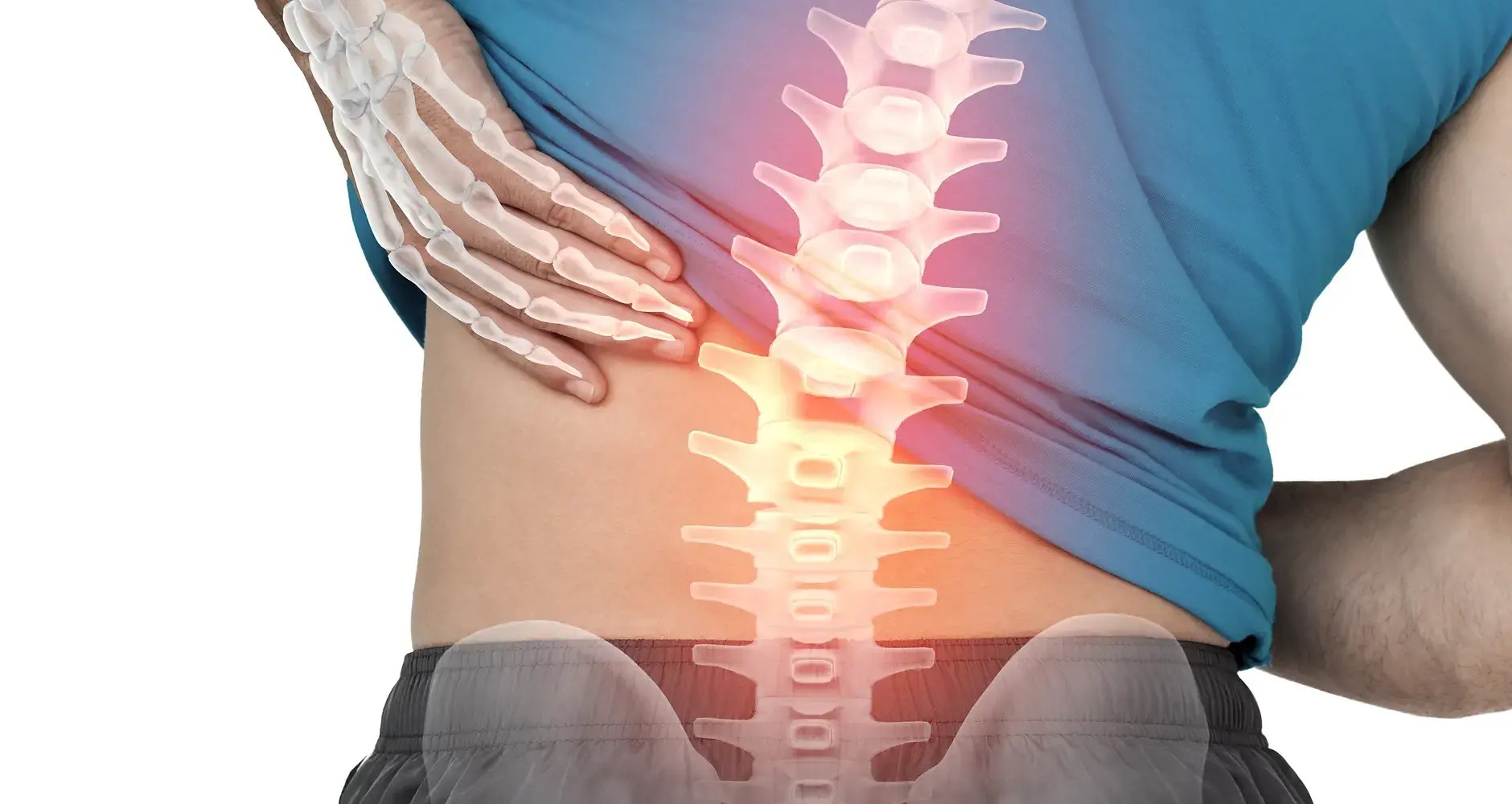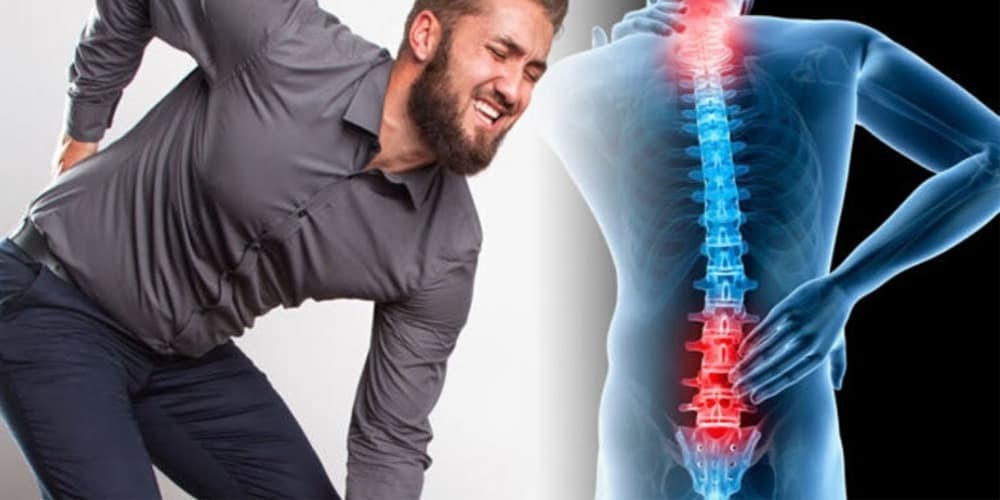What Causes Back Pain in Athletes?
Quick Answer: Athletic back pain typically results from overuse injuries, muscle imbalances, poor technique, inadequate core strength, or sudden traumatic impacts during sports activities.
The spine endures tremendous forces during athletic performance. Runners experience impact forces up to three times their body weight with each stride. Weightlifters compress their vertebrae under hundreds of pounds. Swimmers and rowers twist their torsos through thousands of repetitions weekly.
Several factors contribute to back problems in athletes:
- Repetitive stress injuries: Continuous motion patterns without adequate recovery create microtears in muscles and ligaments surrounding the spine
- Muscle imbalances: Overdeveloped front body muscles with weak posterior chain creates uneven tension on the vertebral column
- Technical flaws: Improper form during lifting, throwing, or running places abnormal stress on spinal structures
- Insufficient core stability: Weak abdominal and back muscles fail to protect the spine during dynamic movements
- Training errors: Increasing intensity or volume too quickly doesn’t allow tissues to adapt properly
- Previous injuries: Old sprains or strains that never fully healed create vulnerable areas prone to re-injury
Contact sports add another dimension with direct trauma from tackles, collisions, or falls. Sports requiring rotation—like golf, tennis, and baseball—place particular stress on the thoracolumbar junction where the rigid thoracic spine meets the mobile lumbar region.
How Can Athletes Prevent Back Injuries?

Quick Answer: Prevention requires progressive strength training, proper warm-up routines, technique refinement, adequate recovery periods, and addressing muscle imbalances before they cause problems.
Prevention always outperforms treatment. Building resilience into your body costs less time and effort than recovering from injury.
Progressive Strength Development
Your core acts as a natural weight belt, stabilizing the spine during movement. Effective core training goes beyond simple crunches. Planks, dead bugs, bird dogs, and pallof presses train your trunk to resist unwanted motion while maintaining neutral spine alignment. Start with bodyweight exercises and gradually add resistance as form improves.
Posterior chain strength matters equally. Deadlift variations, Romanian deadlifts, and back extensions strengthen the erector spinae, glutes, and hamstrings that support proper spinal mechanics. These muscles counter the forward-pulling forces many sports create.
Movement Quality Over Quantity
Perfect practice prevents problems. Working with a qualified coach to refine technique pays dividends across your athletic career. Video analysis reveals compensatory patterns you can’t feel during performance. Small adjustments in hip hinge mechanics, throwing motion, or running form reduce cumulative stress on vulnerable areas.
Smart Training Periodization
Your body adapts to stress during recovery, not during the workout itself. Following the 10% rule—increasing training volume by no more than 10% weekly—gives tissues time to strengthen. Build recovery weeks into your schedule every 3-4 weeks with reduced intensity and volume. This strategic backing off prevents overuse injuries before they start.
Mobility and Flexibility Work
Tight hip flexors, hamstrings, and thoracic spine restrict normal movement patterns, forcing the lumbar region to compensate. Daily mobility work takes 10-15 minutes but dramatically improves how your body distributes forces. Foam rolling, dynamic stretching before workouts, and static stretching afterward maintain healthy tissue quality.
What Are the Best Recovery Strategies for Athletic Back Pain?
Quick Answer: Effective recovery combines active rest, targeted exercises, manual therapy, gradual return to activity, and sometimes professional medical treatment depending on injury severity.
When back pain strikes despite prevention efforts, strategic recovery accelerates healing and prevents chronic problems.
Immediate Response (First 48-72 Hours)
Contrary to old advice, complete bed rest usually worsens outcomes. Gentle movement maintains blood flow and prevents stiffness. Apply ice for 15-20 minutes several times daily to reduce inflammation. Continue light activities that don’t increase pain—walking often helps more than lying down.
Pain medications like NSAIDs (ibuprofen, naproxen) can reduce inflammation, but use them strategically rather than masking pain to continue training. Pain signals something needs attention.
Active Recovery Phase
As acute pain subsides, introduce targeted exercises that promote healing without aggravating symptoms. The McKenzie method uses specific directional movements to centralize pain and restore normal mechanics. Physical therapists can prescribe individualized protocols based on your particular injury pattern.
Core stabilization exercises become crucial during this phase. Start with low-intensity variations like supine marches, modified planks, and quadruped movements. These rebuild the muscular support system that protects your spine.
Manual Therapy Approaches
Skilled hands-on treatment can accelerate recovery when combined with exercise. Options include:
- Physical therapy: Combines manual techniques with exercise prescription and education
- Chiropractic care: Spinal manipulation may provide relief for certain mechanical back problems
- Massage therapy: Reduces muscle tension and improves tissue quality around injured areas
- Dry needling or acupuncture: Addresses trigger points and promotes healing responses
Choose practitioners with experience treating athletes who understand the demands of returning to sport.
How Should Athletes Return to Training After Back Injury?
Quick Answer: Return gradually through modified training, starting at 50% intensity, progressively increasing load while monitoring symptoms, and only resuming full activity when completely pain-free during sport-specific movements.
Rushing back to full training invites re-injury and potentially chronic problems. A structured return-to-play protocol protects your investment in recovery.
The Graduated Loading Approach
Begin with 50% of your pre-injury training volume and intensity. If you remain pain-free for three consecutive sessions, increase by 10-15%. This conservative progression allows tissues to adapt without overwhelming their healing capacity.
Monitor these warning signs that suggest you’re progressing too quickly:
- Pain increasing during or immediately after activity
- Morning stiffness lasting more than 30 minutes
- Pain radiating into the legs or buttocks
- Decreased range of motion compared to previous sessions
- Compensatory movement patterns developing
Sport-Specific Progression
Generic fitness doesn’t prepare you for sport demands. Gradually reintroduce the specific movements your competition requires. A tennis player needs to progress through groundstrokes before attempting full-power serves. A runner should master flat ground before tackling hills or speed work.
Practice your sport at reduced intensity before returning to competition. Scrimmages, light sparring, or technical practice sessions test your back under realistic conditions without the all-out effort that competitions demand.
What Role Does Nutrition Play in Back Health and Recovery?
Quick Answer: Proper nutrition supports tissue repair through adequate protein, reduces inflammation with omega-3 fats, maintains bone density with calcium and vitamin D, and promotes healing through overall caloric sufficiency.
Your body rebuilds itself from the nutrients you provide. Recovery happens in the kitchen as much as the gym.
Protein intake becomes particularly important during injury recovery. Aim for 1.6-2.2 grams per kilogram of body weight daily, spread across multiple meals. This supports muscle maintenance and tissue repair. Include high-quality sources like lean meats, fish, eggs, dairy, legumes, and plant-based proteins.
Omega-3 fatty acids found in fatty fish, walnuts, flaxseeds, and chia seeds possess natural inflammation-reducing properties. While inflammation serves a purpose in early healing, chronic inflammation delays recovery. Consuming 2-3 grams of omega-3s daily may shorten recovery timelines.
Bone health matters even in soft tissue injuries. Weight-bearing exercise combined with adequate calcium (1000-1300mg daily) and vitamin D (600-800 IU daily) maintains skeletal strength. Many athletes are deficient in vitamin D, especially those training primarily indoors or living in northern climates.
Hydration affects tissue quality and healing capacity. Intervertebral discs contain significant water content, and dehydration reduces their shock-absorbing capacity. Drink enough that your urine remains pale yellow throughout the day.
When Should Athletes Seek Professional Medical Help?
Quick Answer: Seek immediate medical attention for severe pain, numbness or weakness in legs, loss of bladder or bowel control, pain from trauma, or symptoms not improving after two weeks of self-care.
Most athletic back pain resolves with conservative treatment, but certain red flags require professional evaluation.
Emergency situations include:
- Sudden loss of bowel or bladder control (potential cauda equina syndrome)
- Progressive leg weakness or numbness
- Back pain accompanied by unexplained weight loss or fever
- Severe pain that doesn’t respond to position changes or rest
- Pain following significant trauma like a fall or collision
Schedule an appointment within a few days if you experience:
- Pain radiating below the knee
- Symptoms persisting beyond two weeks despite home treatment
- Recurrent episodes becoming more frequent or severe
- Pain interfering with sleep despite medication
- Functional limitations affecting daily activities
Diagnostic imaging (X-ray, MRI, CT scan) isn’t always necessary. Research shows many imaging findings like disc bulges appear in pain-free individuals. Your healthcare provider will determine if imaging adds value to your treatment plan.
Can Cross-Training Help Prevent Back Pain?
Quick Answer: Yes, cross-training reduces repetitive stress by varying movement patterns, addresses muscle imbalances, maintains fitness during recovery, and develops complementary physical qualities that support spinal health.
Specialization creates strength in specific patterns but often leaves gaps in overall physical development. Cross-training fills these gaps while giving overused structures rest.
Swimmers benefit from strength training that develops muscles swimming doesn’t target. Runners gain from cycling or pool running that maintains cardiovascular fitness without ground impact. Team sport athletes use yoga or Pilates to improve flexibility and body awareness.
The variety also provides mental refreshment. Training monotony can lead to decreased motivation and increased injury risk as focus wanes. Mixing different activities keeps training engaging while building a more resilient body.
Select cross-training activities that complement rather than compound your primary sport’s demands. A golfer’s rotation-heavy sport might benefit from swimming’s balanced development. A cyclist’s forward-flexed position could use yoga’s extension-focused movements as counterbalance.
Read More Also: Oral Health and Smile Aesthetics
Conclusion
Back pain doesn’t have to derail your athletic pursuits. Prevention through intelligent training design, progressive loading, and attention to movement quality keeps most athletes pain-free throughout their careers. When injuries occur, strategic recovery protocols accelerate healing and prevent chronic issues from developing. Remember that your spine serves you for a lifetime beyond your competitive years—investing in its health pays dividends far beyond any single season or event. The strategies outlined here work across all sports and experience levels when applied consistently and intelligently.
Ready to protect your back and perform at your best? Start implementing these prevention strategies today. If you’re currently dealing with back pain, consult with a sports medicine professional to create your personalized recovery plan. Your future self will thank you for the proactive steps you take now.
Frequently Asked Questions
Should I continue training through mild back pain?
Mild discomfort (2-3 out of 10 pain scale) that doesn’t worsen during activity or affect form can often be managed while continuing modified training. However, pain that increases during exercise, alters your technique, or persists more than a few days requires rest and evaluation. The rule of thumb: if pain doesn’t decrease or disappear during warm-up, skip that session.
How long does athletic back pain typically last?
Most acute back strains improve significantly within 2-4 weeks with appropriate treatment. Complete resolution may take 6-8 weeks. Injuries involving disc problems or nerve compression may require 8-12 weeks or longer. Chronic pain lasting beyond three months needs comprehensive evaluation to identify underlying causes and develop effective treatment strategies.
Are certain sports more likely to cause back problems?
Yes. Sports involving repetitive flexion (rowing, cycling), extension (gymnastics, diving), rotation (golf, tennis), or impact (running, jumping sports) place higher demands on the spine. However, proper conditioning and technique reduce risk across all sports. No sport is inherently “bad” for your back when practiced with good form and appropriate preparation.
Do core strengthening exercises really prevent back injuries?
Research strongly supports core training for injury prevention. Strong core muscles stabilize the spine, reduce excessive motion during dynamic activities, and distribute forces more efficiently. However, “core strength” means more than visible abs—it includes deep stabilizers, back muscles, and hip muscles working together. Balanced core development reduces back injury risk by 30-50% in athletic populations.
What’s the difference between muscle soreness and injury pain?
Normal muscle soreness (delayed onset muscle soreness or DOMS) appears 24-48 hours after exercise, feels like general muscle ache, improves with movement, and resolves within 2-3 days. Injury pain typically appears during or immediately after activity, feels sharp or localized, may worsen with specific movements, and doesn’t improve with gentle activity. When uncertain, err on the side of caution and rest.
Can poor sleep affect back pain and recovery?
Absolutely. Sleep deprivation increases pain sensitivity, slows tissue repair, and reduces athletic performance. Aim for 7-9 hours nightly. Sleep position matters too—side sleeping with a pillow between knees or back sleeping with pillow under knees maintains neutral spine alignment. Poor sleep creates a cycle where pain disrupts rest, and inadequate rest worsens pain.
Should I wear a back brace during training?
Back braces serve specific purposes but aren’t recommended for routine training. They may help during heavy lifting sessions or when returning from injury, but prolonged use can weaken core muscles as they rely on external support. Use braces temporarily and strategically while simultaneously strengthening the muscles that should be doing the supporting work naturally.














